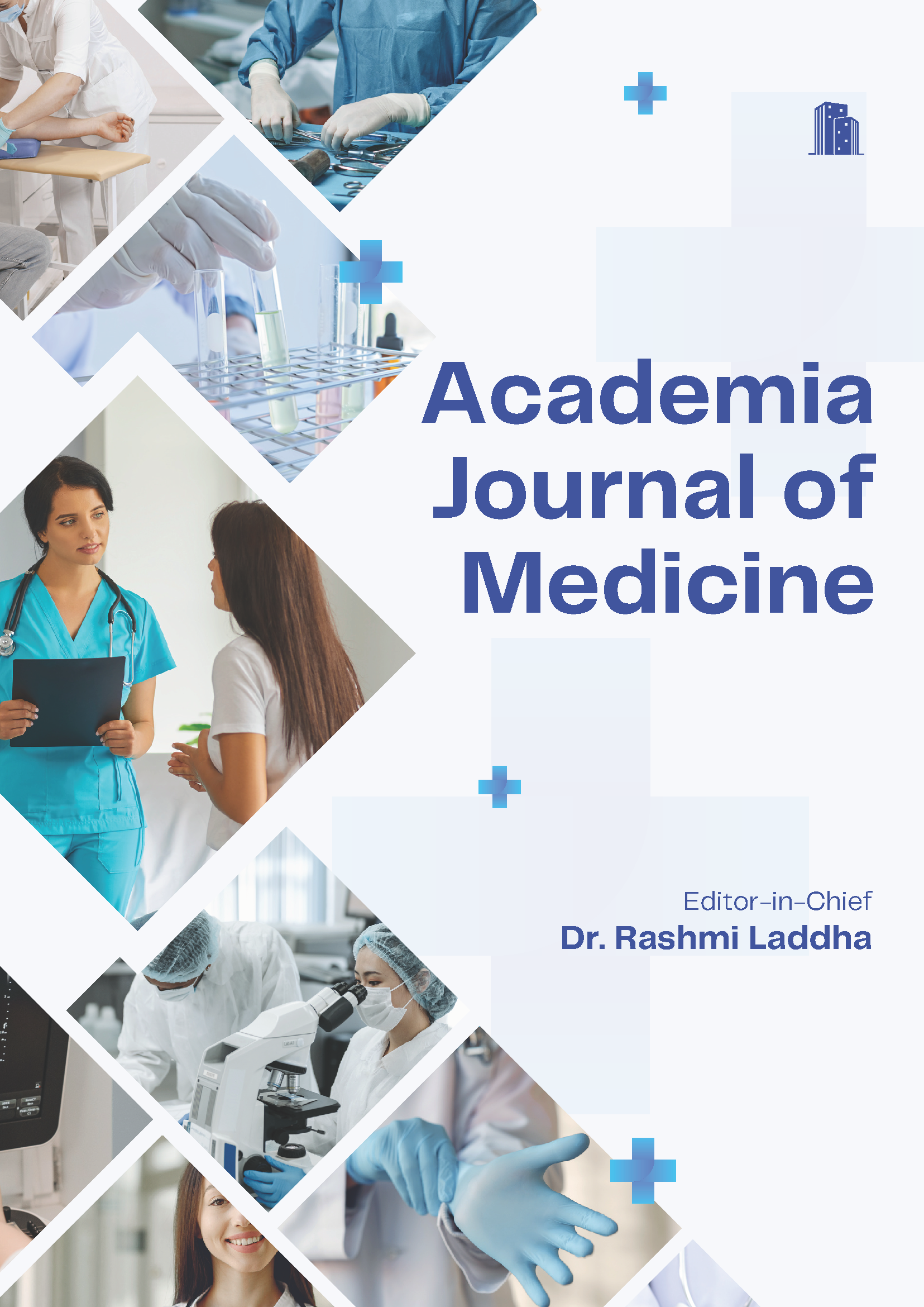Relationship between Glycemic Control in Type II Diabetes Mellitus and Anaemia
DOI:
https://doi.org/10.48165/z3y1qp93Keywords:
Diabetes, Anaemia, Glycemic control, HbA1c, micro and macro vascular complicationsAbstract
Background: Chronic hyperglycemia in uncontrolled diabetes is related to higher incidence of anaemia which goes unrecognized prior to the development of chronic renal failure.This study was conducted to know the prevalence of Anaemia in persons with with Type II Diabetes Mellitus,in relation to glycemic control using HbA1c as a tool to it. Subjects and Methods: 60 Diabetic subjects were divided into two groups of 30 each based on their glycemic control(group A,with poor glycemic control and group B with good glycemic control taking 7% Hba1c as cut off value),incidence of anaemia was measured and compared among them and also with 30 age and sex matched healthy non Diabetic controls. Results: Incidence of anaemia was found to be significantly higher in diabetics group as compared to non diabetics and among diabetics it was significantly higher in uncontrolled group as compared to group with controlled diabetes. Conclusion: Good glycemic control in diabetes is associated with a better haemoglobin levels,hence it is desirable to evaluate the haemoglobin level often to monitor the micro and macrovascular complications of diabetes even when the renal parameters are normal.
References
1. Loghmani E. Diabetes Mellitis: Type 1 And Type 2. 2005 [cited 2014 Sep 15];
2. Ambady Ramachandran, Ananth Samith Shetty, Arun Nanditha, Chamukuttan, Snehalatha. Type II Diabetes in India: Challenges and possible solutions. In: Muruganathan A, editor. Medicine Update. Volume 23; New delhi: M/s Jaypee Brothers Medical Publishers (P) Ltd; 2013
3. Wild S, Sicree R, Roglic G, King H, Green A. Global prevalence of diabetes estimates for the year 2000 and projections for 2030. Diabetes Care 2004 May; 27(5):1047-53
4. WHO annual data from periodicals 2016.pg21-25
5. International diabetic federation report 2015
6. American Diabetes Education. Diagnosis and classification of diabetes mellitus. Diabetes care37; 2014 Jan; suppl:s5-10
7. Powers AC. Diabetes Mellitus. In: Fauci AS, Braunwald E, Kasper DL, Hauser SL, Longo DL, Jameson JL et al. editors, Harrison’s principles of Internal Medicine. 19th ed. USA: Mc Graw Hill: 2015: p: 2403 – 2405
8. Adetunji, FWACP, A Olujohungbe, MRCP J.Ronand Prevalence and characteristic of anaemia in Diabetes Practical Diabetes, International Journal, Apr: 2008; 25. 1.
9. Merlin C Thomas, Richard J. MacIsaac, Con Tsalamandris, David Power, George Jerums. Unrecognized anaemia in patients with Diabetes. Diabetes Care. April 2003; 4: 1164 – 1169
10. Katherine J. Craig, John D. Williams, Stephen G.Riley, Hilary Smith, David R.Owens, Debbe Worthing et al. anaemia and Diabetes in the Absence of Nephropathy. Diabetes Care. May 2005; 28(5): 1118-1123
11. Dhruv K Singh,Peter Winocour and Ken Farrington; Erythropoietin stress and anaemia in Diabetes Mellitus: Natures Review of Endocrinology.2009; 5,204-210

